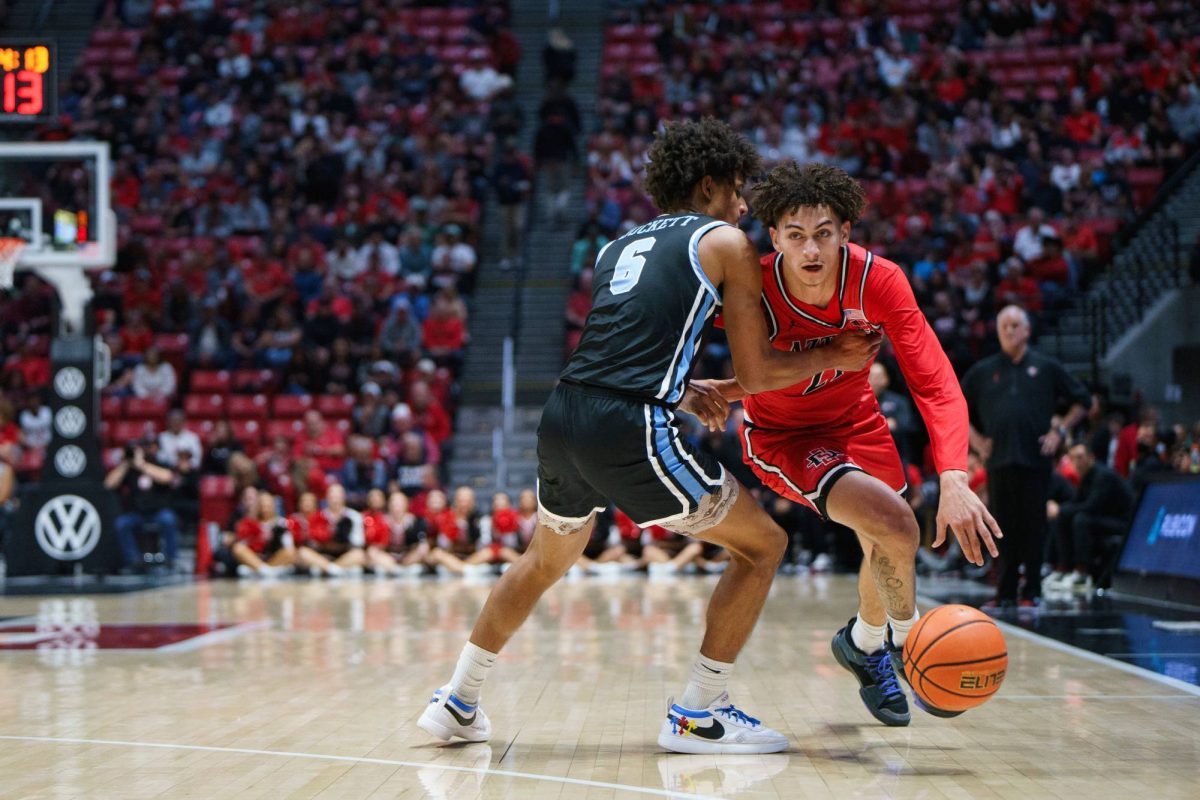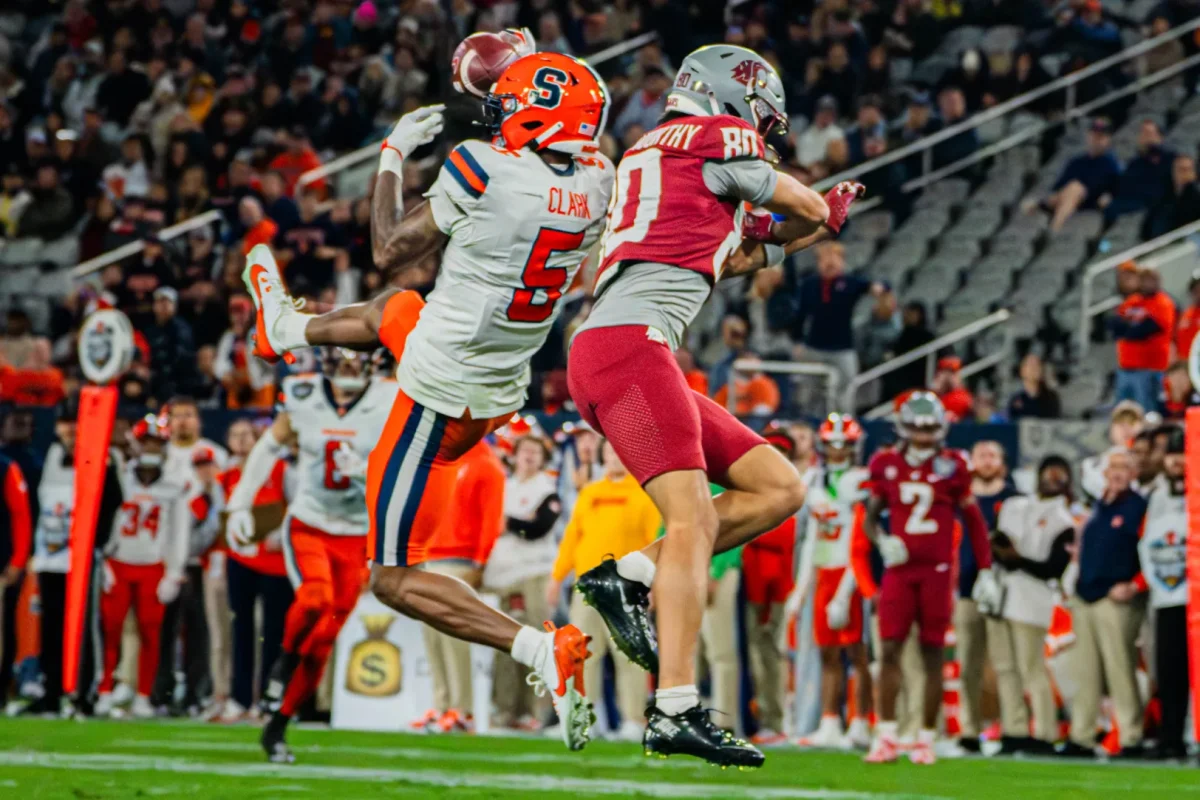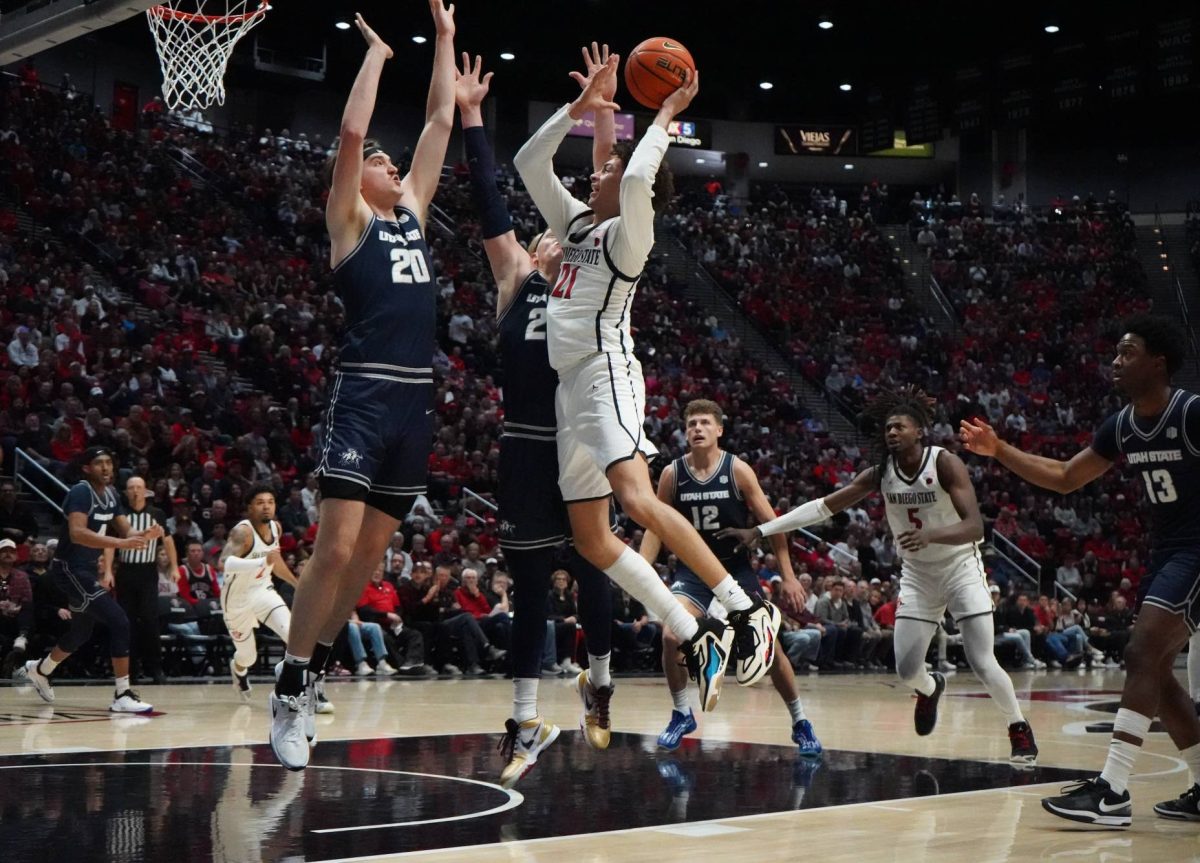


Imagine the excitement of San Diego State senior wide receiver Brice Butler on the last day of the 2013 NFL draft. Playing in a run-oriented offense, Butler wasn’t able to fully showcase his talents, catching only 24 passes for 347 yards and four touchdowns this season. Despite not receiving an invitation to the NFL Scouting Combine, Butler had an excellent pro day and came off very well during interviews at the Casino Del Sol All-Star game. Fortunately, Oakland Raiders receiving coach Ted Gilmore noticed Butler’s hard work. Gilmore called Butler to tell him Oakland had selected him with the 209th pick in the draft.
The 2013 NFL draft also brought incredible news to SDSU junior tight end Gavin Escobar and senior cornerback
Leon McFadden.
In his last two seasons at SDSU, Escobar caught 93 passes for 1,323 yards and 13 touchdowns. Escobar dazzled scouts at the NFL Scouting Combine with his physical prowess and receiving abilities. As the No. 3-ranked tight end entering the draft, Escobar was the 47th overall selection by the Dallas Cowboys. I can’t think of a better team for Escobar. The Cowboys need another tight end to take pressure off of Jason Witten, who set a tight end reception record for the Cowboys with 110 receptions last year. In addition to having an immediate offensive role, Escobar will develop under Witten, arguably one of the greatest tight ends the game has seen.
McFadden was the 68th pick of the draft by the Cleveland Browns. The Browns were impressed by McFadden’s decorated college career, including eight interceptions and 47 defended passes—the most in the Mountain West Conference since it expanded in 2005. McFadden also gained recognition with his combine performance, when scouts said his speed, quick hands and incredible awareness made him a top-tier cornerback, despite his lack of height. Entering Cleveland’s No. 25-ranked pass defense, McFadden has a good chance to get early playing time.
The 2013 NFL draft had many stories aside from the three Aztecs becoming pros. Let’s look at how certain quarterbacks fared. Florida State University quarterback E.J. Manuel was the first quarterback selected. He is going to the Buffalo Bills, a team that already identified him as a potential franchise quarterback. West Virginia University quarterback Geno Smith was selected in the second round by the New York Jets, where current quarterback Mark Sanchez has just about been run out of town. Former University of Southern California quarterback Matt Barkley was a fourth round selection by the Philadelphia Eagles. Eagles Coach Chip Kelly runs a spread offense, designed for a quarterback with a broader skill set than Barkley’s. I’m looking for the Eagles to pick a more likely franchise quarterback next year, and for Barkley to wind up playing elsewhere.
The Pittsburgh Steelers got the steal of the draft—no pun intended. Jarvis Jones, the linebacker from University of Georgia, was once thought to be a top-five caliber player. The Steelers must have been ecstatic when they saw him fall right into their laps as the 17th overall pick. I believe Jones, a defensive juggernaut, will eventually fill the void James Harrison left on Pittsburgh’s defense.
Another story in this draft was the Green Bay Packers’ running game improvement. The Packers selected top-rated running back Eddie Lacy from University of Alabama and speedster Johnathon Franklin from University of California, Los Angeles. If these guys pan out in the NFL, the Packers’ offense will be a two-headed monster, instead of only relying on Aaron Rodgers.
I’d give the Chargers a B+ in this year’s draft. The Chargers first selected D.J. Fluker, an offensive tackle from Alabama. At 6 feet 6 inches tall and weighing 339 pounds, Fluker will definitely create holes for the running game. Next, the Chargers traded up to snag linebacker Manti Te’o from Notre Dame as the 38th overall pick. San Diego has a glaring hole at the inside linebacker position, but many did not expect general manager Tom Telesco to address the need so early. The Chargers’ third pick, Keenan Allen, a wide receiver from Berkeley, is a route-running beast, who will bolster an already good group of wide receivers. The Chargers’ next pick was another Golden Bear, cornerback Steve Williams. Williams is undersized, however, he still broke up 25 passes last season. I guess we’ll have to wait and see how he does as a pro. The Chargers filled a big hole with defensive end Tourek Williams from Florida International University, their sixth pick of the draft. Williams is a natural pass rusher and will be a vital addition to the lackluster, but steadily improving Chargers pass rush. The Chargers’ seventh and final pick of the draft was a surprise, as they selected Brad Sorenson, a quarterback from Southern Utah University. At 6 feet 5 inches tall and weighing 229 pounds, Sorenson has great size, but he comes from a school that faced very weak competition. In addition, the Chargers have no need for another quarterback. This pick is questionable,
at best.
There’s a lot to take from the 2013 NFL draft, but these were the biggest and most significant aspects to come up. I don’t know about you, but I’m already excited for next season.








